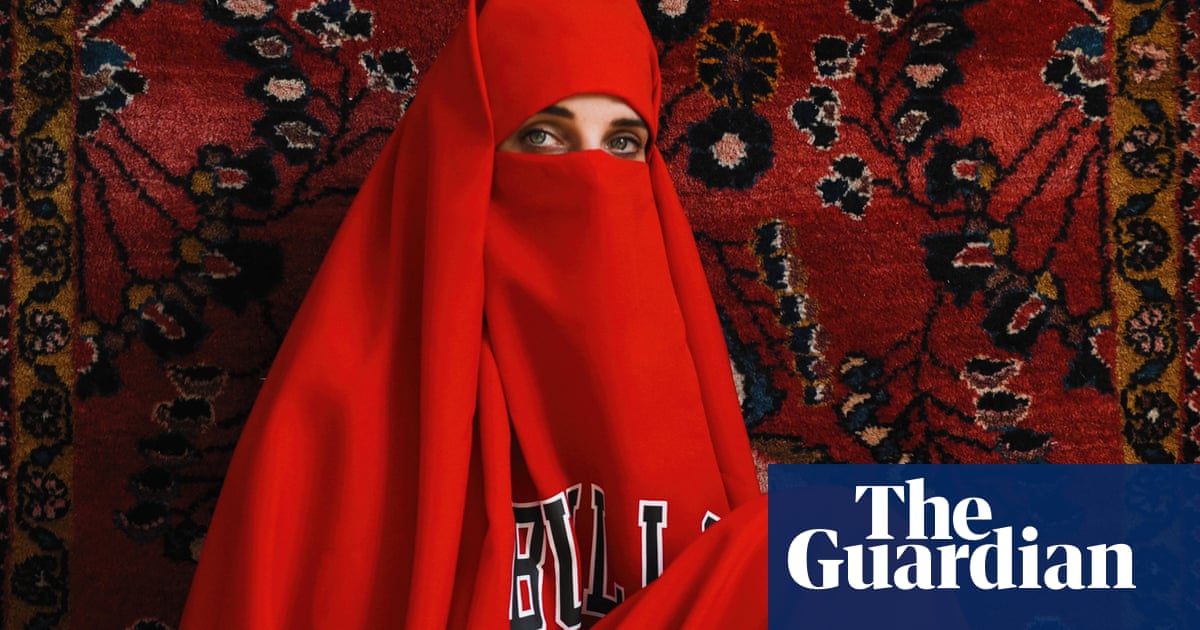
Show caption ‘I try to show how the aesthetics of where I’m from work well with the aesthetics of another part of the world’ … If the Shoe Fits by Mous Lamrabat (2020). My best shot A niqab and balloon shoes for a Moroccan basketball fan: Mous Lamrabat’s best photograph ‘We recreated a pair of Nike trainers and I used Michael Jordan’s number on the niqab. It’s as if, in a parallel universe, this is the uniform for basketball’ Interview by Amy Fleming Wed 27 Jul 2022 15.07 BST Share on Facebook
Share on Twitter
Share via Email
I was born in the north of Morocco, with six siblings. We moved to Belgium when I was two but went back to visit family every year. They were the best times, when memories were made and inspiration was created. Nostalgia is one of my favourite feelings. It takes you back to when you were more free, and I’ve tried to put the things that I grew up with in my work.
There have always been two parts to my work. Fashion, because there you can be creative; there are no borders – everything can be fashion as long as there are clothes involved. And then there are the things that I just loved doing. As a kid, I remember embroidering Nike logos on to the hat my dad used to wear to the mosque, because I thought it was cool. My work is a photographic continuation of that kind of thing.
In 2020, I collaborated with a talented balloon artist for a magazine shoot. I’ve always been a big sneaker fan and asked him to create a shoe for me and he just did it. I took it home and, because balloons don’t last that long, shot this image straight away. It was around the time that the LA Lakers player Kobe Bryant died, and I was creating niqabs with Kobe’s number and Michael Jordan’s number printed on them. I thought: maybe I can shoot a photo with the Jordan niqab and the Nike shoe, as though, what if, in a parallel universe, this would be the uniform for basketball?
I try to create a parallel world where my own aesthetics are there, but with traditional garments. This is how I fantasise about things, and it feels like time travel, in a similar way to how in futuristic movies you see a lot of traditional clothing coming back but with very hi-tech things added. People often say I try to bridge two different worlds, but it’s more that I try to put together different times.
I often choose traditional clothes that remind me of where I’m from, the kind of place that I’m connected with, the things that I saw my grandmother wearing
Just as we easily recognise uniforms for nurses, so traditional clothing tells a story. I often choose traditional clothes that remind me of where I’m from, the kind of place that I’m connected with, the things that I saw my grandmother wearing.
In creating these images for myself, I never would have dreamed that so many people would relate to them. There’s something recognisable for a lot of groups, I guess. I’m into sneakers, I grew up with basketball and hip-hop culture, and if you look at what’s cool right now it’s exactly that kind of streetwear.
Race is something that preoccupies me. But in my work I focus on how much we all have in common. Visually, I try to show how the aesthetics of where I’m from work well with the aesthetics of another part of the world. I love that you can see all kinds of people, all colours and ages, staring at the same photo of mine at a gallery. This is how my whole imaginary universe works – showing that these things look good together; they work together. How come we’re not able to do that in real life?
My recent cover image for GQ Middle East is a continuation of these things working well together – djellabas with basketball jerseys worn over them. We still go to the mosque every Friday with my dad, and when we were playing basketball afterwards we used to wear our jerseys underneath. Now I just put it on top.
Occasionally I see negative responses to my work. Usually it’s about covering women, like: “Why do you romanticise the cover?” from a group that is against hijabs and scarves. Or people who wear the veil say: “Why are you romanticising and disrespecting veiled women?” It’s tough, but when I hear these things it’s usually after people have shared my work on platforms where there’s no context, and those people don’t know me or what I stand for.
• Mous Lamrabat: Blessings from Mousganistan is at Foam, Amsterdam, until 16 October.
Mous Lamrabat. Photograph: Mous Lamrabat/ Loft Art Gallery
Mous Lamrabat’s CV
Born: Temsaman, Morocco, 1983.
Trained: Self-taught.
Influences: “Whatever brings up a feeling or emotion in me.”
High point: “My first solo show with all my family and friends.”
Low point: “People misinterpreting my work and breaking my heart with their ignorance.”
Top tip: “Find your own ‘normal’. Deconstruct everything you know.”








